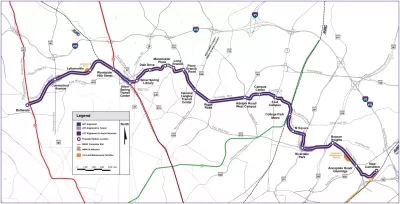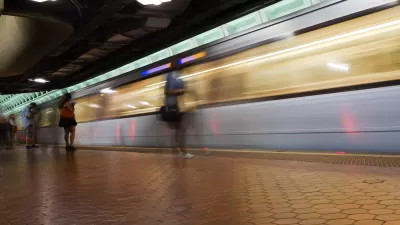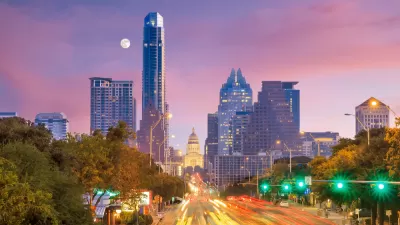Community advocates are warning that Maryland’s new light rail line could cause displacement without concerted efforts to preserve affordable housing and legacy businesses.

The Washington Post’s Katharine Shaver spoke with Gerrit Knaap, founder of the Purple Line Corridor Coalition, a group created to study the potential for displacement and other economic impacts in the areas around Maryland’s new Purple Line light rail.
Knaap spoke to the importance of preserving existing housing stock as well as boosting the construction of new mid-density housing that can serve middle-income households. “The Purple Line corridor is in for a change, and it’s really important that that change is managed to promote equitable development and that we do our best to try to prevent displacement in the corridor.” Knaap also highlighted the importance of community involvement and placemaking to maintaining a vibrant and resilient community. “Obviously being sensitive to the existing cultural assets of a community is where you start. Also engaging with residents who currently live there to identify their aspirations and their cultural preferences is key.”
In addition to housing, connecting residents to the new rail stations will require investments in safer transportation infrastructure for people biking, walking, and using other transit connections to reach the stations. Knapp notes that, due to the suburban nature of much of Maryland, “We’ve identified a lot of places along the Purple Line corridor where the pedestrian and bike access really needs quite a bit of work.”
FULL STORY: As Purple Line construction resumes, the fight against gentrification is on

Study: Maui’s Plan to Convert Vacation Rentals to Long-Term Housing Could Cause Nearly $1 Billion Economic Loss
The plan would reduce visitor accommodation by 25,% resulting in 1,900 jobs lost.

North Texas Transit Leaders Tout Benefits of TOD for Growing Region
At a summit focused on transit-oriented development, policymakers discussed how North Texas’ expanded light rail system can serve as a tool for economic growth.

Using Old Oil and Gas Wells for Green Energy Storage
Penn State researchers have found that repurposing abandoned oil and gas wells for geothermal-assisted compressed-air energy storage can boost efficiency, reduce environmental risks, and support clean energy and job transitions.

Private Donations Propel Early Restoration of Palisades Playground
Los Angeles has secured over $1.3 million in private funding to restore the Pacific Palisades playground months ahead of schedule, creating a modern, accessible space that supports community healing after recent wildfires.

From Blight to Benefit: Early Results From California’s Equitable Cleanup Program
The Equitable Community Revitalization Grant (ECRG) program is reshaping brownfield redevelopment by prioritizing projects in low-income and environmental justice communities, emphasizing equity, transparency, and community benefits.

Planting Relief: Tackling Las Vegas Heat One Tree at a Time
Nevada Plants, a Las Vegas-based nonprofit, is combating the city’s extreme urban heat by giving away trees to residents in underserved neighborhoods, promoting shade, sustainability, and community health.
Urban Design for Planners 1: Software Tools
This six-course series explores essential urban design concepts using open source software and equips planners with the tools they need to participate fully in the urban design process.
Planning for Universal Design
Learn the tools for implementing Universal Design in planning regulations.
Ascent Environmental
Borough of Carlisle
Institute for Housing and Urban Development Studies (IHS)
City of Grandview
Harvard GSD Executive Education
Toledo-Lucas County Plan Commissions
Salt Lake City
NYU Wagner Graduate School of Public Service





























